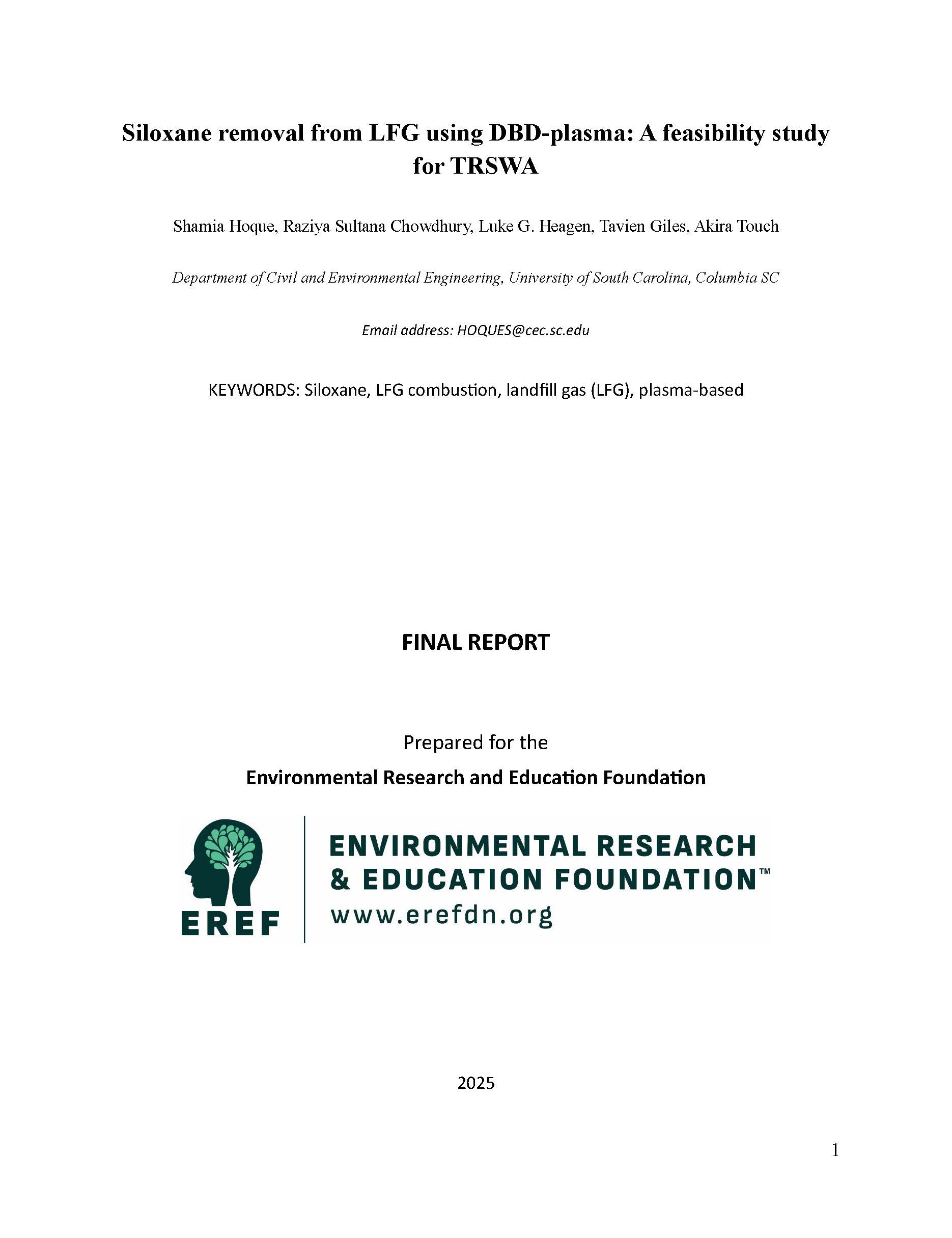Description
Siloxanes in landfill gas (LFG) can foul combustion equipment, shorten engine life, and increase maintenance costs. This EREF-funded study explores an innovative plasma-based approach to siloxane removal, using dielectric barrier discharge (DBD) technology. Conducted in partnership with the University of South Carolina and the Three Rivers Solid Waste Authority, the project assessed the effectiveness, operational dynamics, and economic feasibility of this emerging method.
Results showed that DBD plasma can remove up to 90% of dominant siloxanes and convert them into high-purity polydimethylsiloxane (PDMS), a commercially valuable material. The study also examined how this technology interacts with methane and carbon dioxide in LFG and highlighted key opportunities for system optimization.
While currently cost-limited at lab scale due to carrier gas needs, the findings suggest strong potential for scaled-up implementation. This research provides critical data for landfill operators, technology developers, and energy recovery projects seeking more efficient, circular solutions for LFG management.
Download the full report to explore the findings and operational implications.
$0.00

